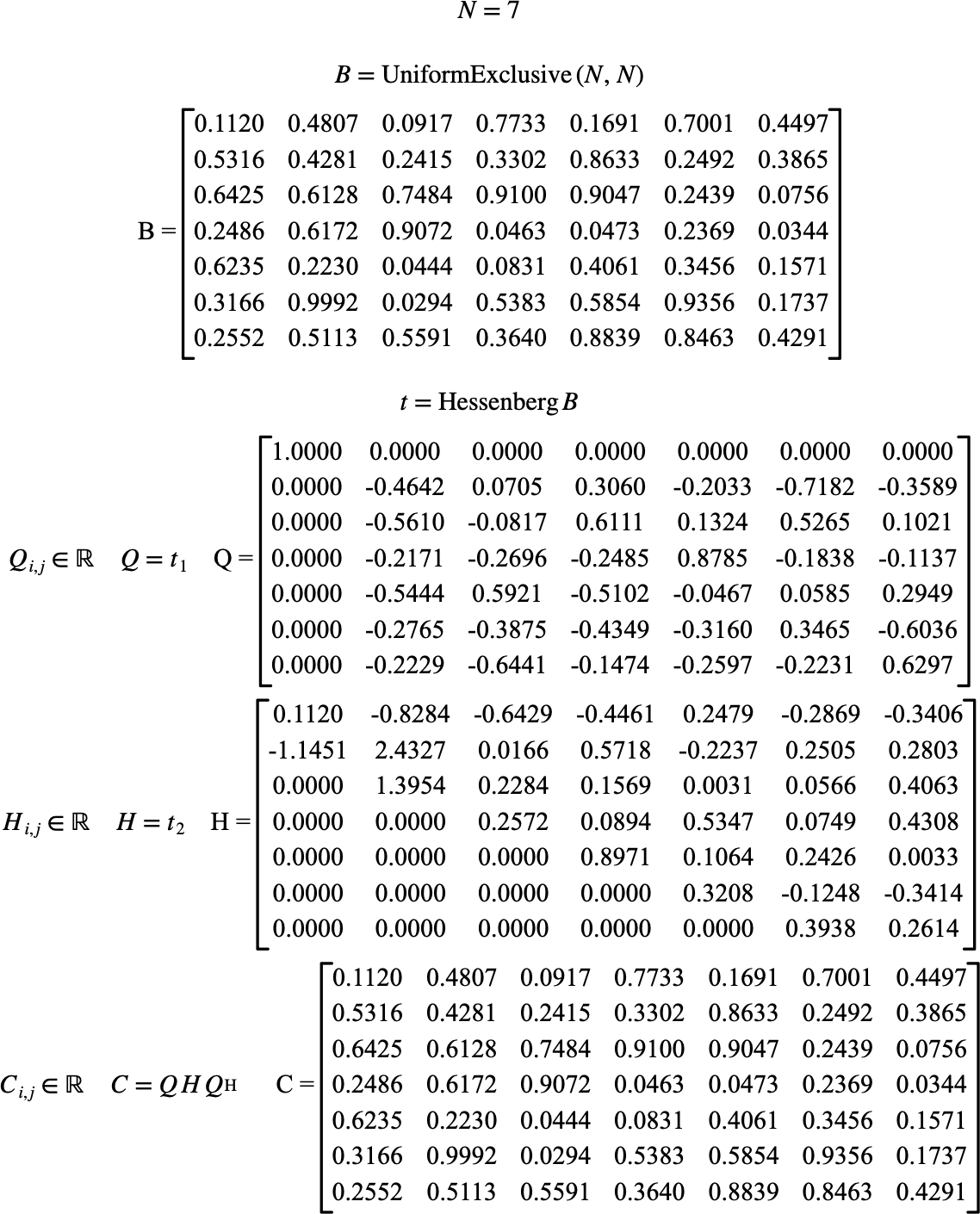\(\text{Hessenberg}\)¶
You can use the \(\text{Hessenberg}\) function to perform a Hessenberg decomposition of a real or complex matrix, creating \(Q H Q ^ T\) or \(Q H Q^H\) respectively.
You can use the \hessenberg backslash command to insert this function.
The following variants of this function are available:
\(\text{tuple } \text{Hessenberg} \left ( \text{<matrix>} \right )\)
The \(\text{Hessenberg}\) function is implemented for real and complex matrices although the function will convert boolean and integer matrices to a real matrix, if needed.
The \(\text{Hessenberg}\) returns a tuple containing:
The \(Q\) unitary matrix, and
The upper Hessenberg matrix, \(H\).
Figure 150 shows the basic use of the \(\text{Hessenberg}\) function.

Figure 150 Example Use Of The Hessenberg Function¶
